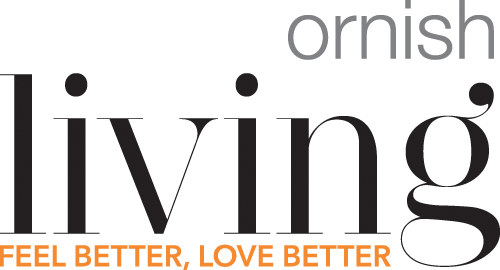
Sodium and Potassium: A Delicate Heart-Healthy Balance
Photo Credit: Kevin Dooley, via Flickr Creative Commons
Sodium is an essential nutrient that regulates water balance, maintains blood volume, and controls blood pressure. It is also important for proper nerve and muscle function. While a certain amount is crucial, excess sodium has been shown to increase the risk for high blood pressure, which can lead to cardiovascular disease, stroke, and kidney disease. The association between sodium and high blood pressure has been debated for decades. Despite the abundance of validated studies demonstrating the link, controversy remains. Part of the controversy is that not all people are sensitive to sodium. Some people’s blood pressure is not affected by sodium or they only experience a marginal effect. Others are more significantly impacted by the increase or reduction in sodium.
Another important factor that is the emerging research about the impact of potassium on blood pressure and heart health. Recent research has shown, however, that blood pressure management and heart health is more about the proper balance of sodium and potassium than the amount of sodium.
A proper sodium potassium ratio is important for nerves and muscles to function properly.
High Blood Pressure and Sodium
High blood pressure affects more than 50 million Americans and more than one billion adults worldwide. The main reason is because the average American eats more than 3600 mg of sodium a day (9 grams of salt), which is more than double the amount of sodium the American Heart Association (AHA) recommends. Excess sodium causes the body to retain extra fluid, which puts additional burden on the heart and narrows blood vessels. This in turn raises blood pressures. The Healthy People 2020 target for the general population recommends 2,300 mg, which is equivalent to about a teaspoon of salt. The main culprit of this excess of sodium is processed and restaurant food. The AHA suggests limiting sodium to less than 1500 mg a day to prevent the prevalence of high blood pressure and hypertension. This message is also consistent with the recommendation made by the 2010 US Dietary Guidelines for Americans for people who are at a higher risk for high blood pressure.
What’s the Right Balance of Sodium and Potassium?
Potassium is a key mineral found within all cells of the body that works in harmony with sodium. It plays an important role in nerve and muscle function, electrolyte regulation, water balance and blood pressure control. Potassium works along with sodium to maintain normal blood pressure and has the potential to provide a protective defense for high blood pressure. A proper sodium potassium ratio is important for nerves and muscles to function properly. Health risks begin when this ratio is out of balance and there is excess sodium.
Most people don’t get enough potassium. The Institute of Medicine recommends 4,700 mg per day of potassium, but according to the 2009-2010 What We Eat In America Report, the average person only get 2640 mg per day. A growing body of evidence suggests that increasing potassium can have a substantial impact on lowering blood pressure and reducing the risk of heart disease and stroke. A 2010 article in JAMA Internal Medicine focuses on research that showed that increasing potassium to recommended levels, along with a reduction of sodium may lower blood pressure and reduce risk of stroke by 8% to 15% and risk of heart disease mortality by 6% to 11%.
Protective Potassium
Some research has found that increasing potassium may even provide a protective effect against high blood pressure. This is because potassium increases the amount of sodium excreted and protects your blood vessels from oxidative damage. Another review of the best studies in The Journal of the American College of Cardiology showed an association increased potassium with lower rates of stroke and potential risk reduction for CHD and total CVD. Most recently, a June 2015 study published in JAMA Pediatrics that examined the effects of dietary sodium, potassium, and the potassium to sodium ratio on adolescent blood pressure, found that increased potassium intake was also associated with lower systolic and diastolic blood pressure, even in the presence of a sodium intake of up to 3,000 mg per day or more. This study is the first evidence that eating more potassium-rich foods during childhood may help high blood pressure later in life.
Lifestyle Risks and Hypertension
If you’re not sensitive to sodium, you may also want to consider certain lifestyle behaviors, conditions, and traits that can also increase your risk for hypertension. Factors that increase risk are:
- Age: People over age 50.
- Gender: Before age 45, men are more likely to develop high blood pressure than women. After age 65, hypertension is likely to affect more women than men.
- Race/Ethnicity: African Americans and Puerto Rican Americans tend to be more susceptible to hypertension.
- Overweight or Obese: Being overweight increases one’s risk for high blood pressure and heart disease. That’s because being overweight requires more blood to supply nutrients and oxygen to your tissues. When more blood circulates through your blood vessels, it increases the pressure in the artery walls. Even a small weight loss can reduce blood pressure and reduces strain on the heart.
Normal Weight BMI: 18.5-24.9
Overweight BMI: 25-29.9
Obese BMI: 30.0-39.9
Extreme Obesity: 40.0 and above
- Unhealthy Lifestyle: A diet high in processed foods, saturated fats and sodium, and low in potassium can increase rick for high blood pressure along with a sedentary and stressful lifestyle.
- Pre-existing Conditions: Conditions such as elevated blood pressure, diabetes, sleep apnea, and chronic kidney disease increase risk and can increase risk of other complications of disease.
- Family History: High blood pressure tends to run in families.
Making healthy changes in your lifestyle and diet can make a significant difference in lowering your blood pressure and the risks for heart disease and other complications. Decades of research supports the benefits of a whole food, plant-based approach to eating that is high in potassium-rich foods and lower in sodium. Here are some helpful strategies to get started:
Eat More Potassium Rich Foods
Eat a plant-based, whole-food diet high in naturally potassium-rich foods. This includes vegetables such as tomatoes and tomato sauce, broccoli, beets and beet greens, carrots; starchy vegetables such as potatoes and winter squash; lentils and beans, especially white beans and soybeans; fruit such as bananas, apricots, prunes, and cantaloupe.
Use More Herbs and Citrus Zest
Replace salt with herbs, spices and citrus zest to enhance flavor. Herbs and spices have been used since ancient times for both culinary and medicinal purposes. See our Ornish Living article Spice it Up: It’s Good for You for healthy and creative ideas for using spices.
Avoid Processed Food
Stock your kitchen with plant-based, whole foods. Watch this Ornish Lifestyle Medicine video for some tips on stocking a heart-healthy kitchen.
Read Labels and Know Your Nutrition Facts
Choose packaged foods that are low in sodium, ideally with 5% or less, or less than 140 mg of sodium per serving for most packaged food. Be aware of sources of added sodium beyond salt such as sodium benzoate, disodium or monosodium glutamate (MSG), sodium nitrate, and sodium biocarbonate (baking soda).
What have you noticed about your body when you change the amount of sodium you ingest?







